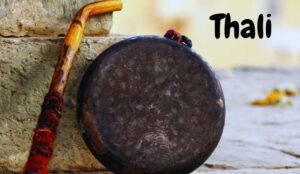The Indian Military Academy (IMA) stands tall as an emblematic institution that shapes young boys into future Army officers – a source of immense pride for India. Since its establishment in 1932, IMA has gained recognition as a prestigious officer training academy within the Indian Army, located in Dehradun.
This revered establishment was born out of the recommendations made by the Indian Military College Committee and took form under Field Marshal Philip Chetwode’s chairmanship back in 1930
IMA Overview
|
Address: |
19, Chakrata Rd, Phase 2, Indian Military Academy, Dehradun, Uttarakhand 248007 |
|
Campus Size: |
1,400 acres (5.666 km²) |
|
Motto: |
Valour and Wisdom (वीरता और विवेक) |
|
Founded On: |
1 October 1932 |
Motto of IMA
The Indian Military Academy, known for its motto of Valour and Wisdom, upholds its principles diligently. All army cadets undergo intensive training for a year, after which the gentleman cadets are granted permanent commission as Lieutenants in the army. It is a matter of great pride that over 61,000 gentleman cadets have successfully graduated from IMA until October 1, 2019, marking the 87th raising day.
The IMA’s honor code emphasizes character development and strictly prohibits lying, stealing, cheating or tolerating such behavior. Inspired by the Bhagwat Gita, the Warrior Code of IMA not only highlights the duty of fighting but also emphasizes compassion.
History of IMA
The process of Indianizing the army commenced when 31 Indian officers were commissioned, but the British authorities continued to suppress the demand for expanding the Indian officer cadre. This issue was raised by representatives at the first Round Table Conference in 1930.
Fortunately, one of the few concessions made at the conference was the establishment of an Indian officer training college. To initiate this, the Indian Military College Committee was formed, with Field Marshal Sir Philip Chetwode as its chairman. A significant milestone in the illustrious history of IMA occurred in January 1949 when it underwent expansion.
– Armed Forces Academy in Dehradun changed its name to National Defence Academy in 1950
– Joint Services Wing of NDA moved to Pune in 1954
– Military Wing in Dehradun renamed Military College
– Military College later became Indian Military Academy in 1960
How IMA Came Into Existence
Under British rule in India, Indians were denied the opportunity to rise to officer level or receive local officer training. However, during World War I, Indian soldiers demonstrated exceptional bravery and as a result, the Montague-Chelmsford Reforms allowed ten Indians per year to undergo officer training at the Royal Military College, Sandhurst.
In 1922, the Prince of Wales Royal Indian Military College (now known as the Rashtriya Indian Military College or RIMC) was established in Dehradun with the aim of preparing young Indians for admission to Sandhurst.
Honours bestowed upon the alumni of IMA Dehradun
The Indian Military Academy (IMA) has a distinguished list of alumni, including India’s First Field Marshal Sam Manekshaw and the brave recipients of Param Vir Chakra, the highest military honor in the country.
Among the notable names on this prestigious list are Somnath Sharma, Captain Vikram Batra, Lieutenant Colonel Hoshiar Singh, and Captain Gurbachan Singh Salaria. Additionally, IMA alumni have been honored with 17 Ashoka Chakras, 84 Maha Vir Chakras, and 41 Kirti Chakras for their gallantry.
Rules and Life of Trainees at IMA Dehradun
The Indian Military Academy, located in Dehradun, Uttarakhand, serves as the central hub for IMA training. It unites cadets from diverse ethnic backgrounds, fostering a sense of brotherhood and harmony. Through this, aspiring officers are encouraged to appreciate India’s rich diversity and secular values.
– Trainees at the academy are called gentleman cadets (GCs)
– GCs undergo physical training, drills, weapons training, leadership development, and practices
– Academy instills a sense of responsibility and decorum in GCs
– GCs must follow rules and regulations on and off campus, including visitation rules
– The academy provides excellent career opportunities, inspiring many to join the Indian National Army
Training at IMA
The Indian Military Academy consists of four training Battalions, namely Bhagat, Cariappa, Thimayya, and Manekshaw. These Battalions are led by Colonels and supported by Majors and Captains who serve as Company and Platoon Commanders.
– Training regime at IMA enhances mental, physical, operational, and administrative skills of cadets.
– GCs actively participate in sports including hockey, basketball, polo, football, and boxing.
– Adventure activities like trekking, cycling, and rock climbing are also undertaken at IMA.
– Annual sports meet at IMA Dehradun includes participation from other Indian military academies.
Selection Procedure of Indian Military Academy
– IMA cadets train for one year, non-military college graduates for one and a half years
– Candidates for IMA are selected through competitive exams
– Selection process includes written examination, medical test, and interview
– Candidates must meet age, physical, and medical requirements
– Must have a degree from a recognized university
– Entrance exam is required to join IMA
How to Join IMA?
Discover the paths to become a part of the esteemed Indian Military Academy (IMA), renowned in Dehradun.
Through NDA Exam
– Eligible candidates for NDA must have passed 10+2 and be unmarried males aged 16.5 to 19 years.
– PCM (Physics, Chemistry, Mathematics) must be their main subjects in the 10+2 degree.
Through CDSE
– – Male graduates can join IMA through CDSE
– CDSE written exam and SSB exam are required
– Candidates must be medically fit
– Final selection is based on merit ranking
– Age limit: 19-24 yrs
– No percentage bar to apply for CDS exam
– Exam held twice a year in March/April and September/October
Technical Graduate Course (TGC)
– Final year or completed B.E B. Tech students can join IMA through technical graduate course
– Age requirement is 19-25 years
– Training duration is 1 year
– Look for advertisement in newspapers in May, June, November, and December
Through University Entry Scheme
Candidates who are either in their final or pre-final year of engineering can apply for this entry. They must have a minimum percentage of 60 and fall within the age range of 20-25 years. The selection process for this entry is conducted through campus SSB interviews. This entry is specifically for the Indian Military Academy.
– Technical graduates, ex-NDA, ex-ACC, and University entry cadets receive training at IMA.
– Duration of training varies for each group.
– Gentleman Cadets receive a monthly stipend of Rs. 56,100 for the entire course.
Physical Standards and Fitness Level expected from an Army aspirant
Physical fitness is a crucial prerequisite for anyone aspiring to join the Indian Military Academy. It is essential for IMA aspirants to consistently improve their mental and physical strengths, as this will benefit them not only during their training but also in the future. Regardless of the branch they choose, meeting the academy’s basic physical standards is mandatory.
The General Physical Requirements applicable to all candidates at the Indian Military Academy are as follows:
– Candidate must be physically fit and mentally healthy
– No diseases or disabilities, including skin infections and bone/joint diseases
– Chest should have minimum 5 cm expansion
– No functional or organic diseases of heart and blood vessels
– Normal blood pressure
– Urine examination conducted, any abnormalities will result in rejection
Passing Out Parade (POP) in IMA
– IMA’s Passing Out Parade (POP) marks completion of training period
– Adjutant leads parade with a joke to lighten atmosphere
– Senior officers and family members attend to boost morale
– Army band plays Aarti to start POP ceremony
– Lt. Gen. Cherish Mathson was reviewing officer for 136th parade in 2019
How to reach IMA Dehradun?
– – Indian Military Academy is located on NH72, 10km from Clock Tower in Dehradun.-
– It is located on Chakrata road, around 7 km away from Clock Tower, Dehradun
– Shared autos, Vikram or buses can be taken to reach the academy from the city centre
– The nearest railhead is Dehradun railway station, 7 km away
– Jolly Grant airport is the closest air connectivity, located 35 km away from IMA.
Conclusion: Forging Leaders at the Indian Military Academy
The Indian Military Academy (IMA) stands as a beacon of honor, discipline, and excellence, nurturing the next generation of leaders who will safeguard the nation’s sovereignty and uphold its values. Through its rigorous training, holistic development, and unwavering commitment to molding exceptional officers, the IMA has etched its name in the annals of India’s military history.
Frequently Asked Questions about the Indian Military Academy
What is the Indian Military Academy (IMA)?
The Indian Military Academy (IMA) is an iconic institution that trains and educates young individuals to become officers in the Indian Army. Located in Dehradun, India, it is renowned for its rigorous training and leadership development programs.
How can one join the Indian Military Academy?
Aspiring candidates can join the Indian Military Academy through various entry routes, such as the Indian Army’s Combined Defence Services Examination (CDSE), National Defence Academy (NDA), Technical Graduate Course (TGC), and Short Service Commission (SSC) entries.
What is the duration of training at the IMA?
The training duration at the IMA varies depending on the entry route. Generally, the training period ranges from one to two years, during which cadets undergo physical conditioning, academic instruction, and leadership development.
What kind of training do cadets receive at the Indian Military Academy?
Cadets at the IMA undergo a holistic training regimen that includes physical fitness, military tactics, leadership development, and academic education. They are prepared to excel in various roles and terrains, ranging from combat to administrative responsibilities.
Are there any academic requirements for joining the IMA?
Yes, candidates must fulfill specific educational criteria depending on the entry route they choose. A bachelor’s degree from a recognized university is generally required for most entries.





